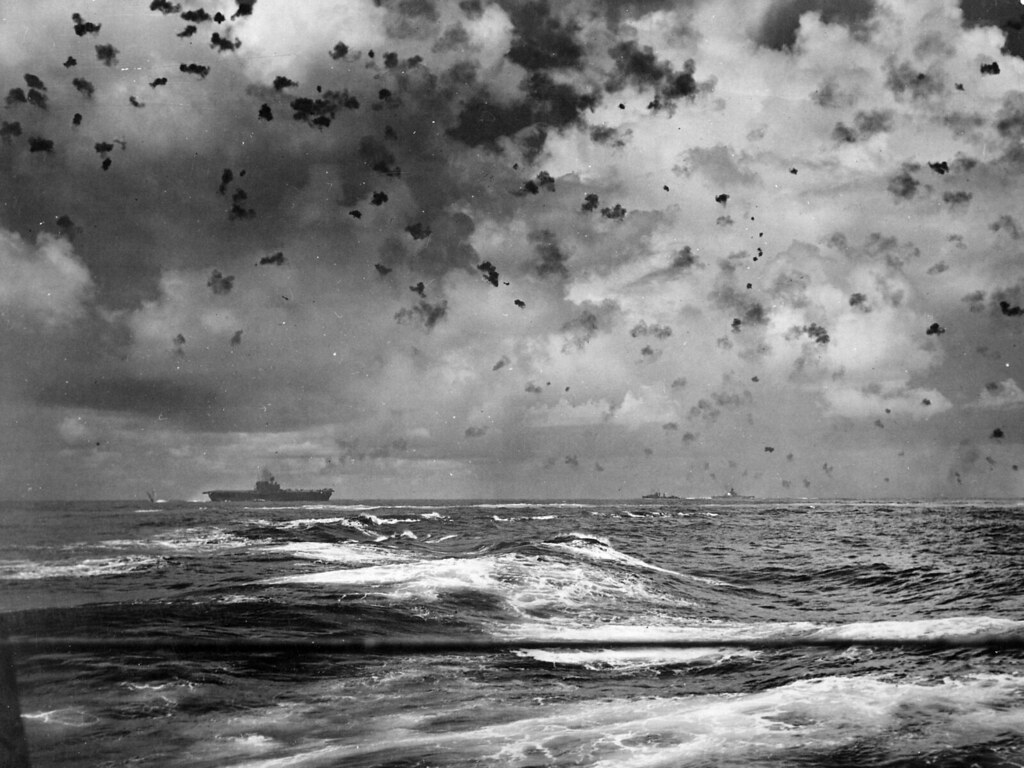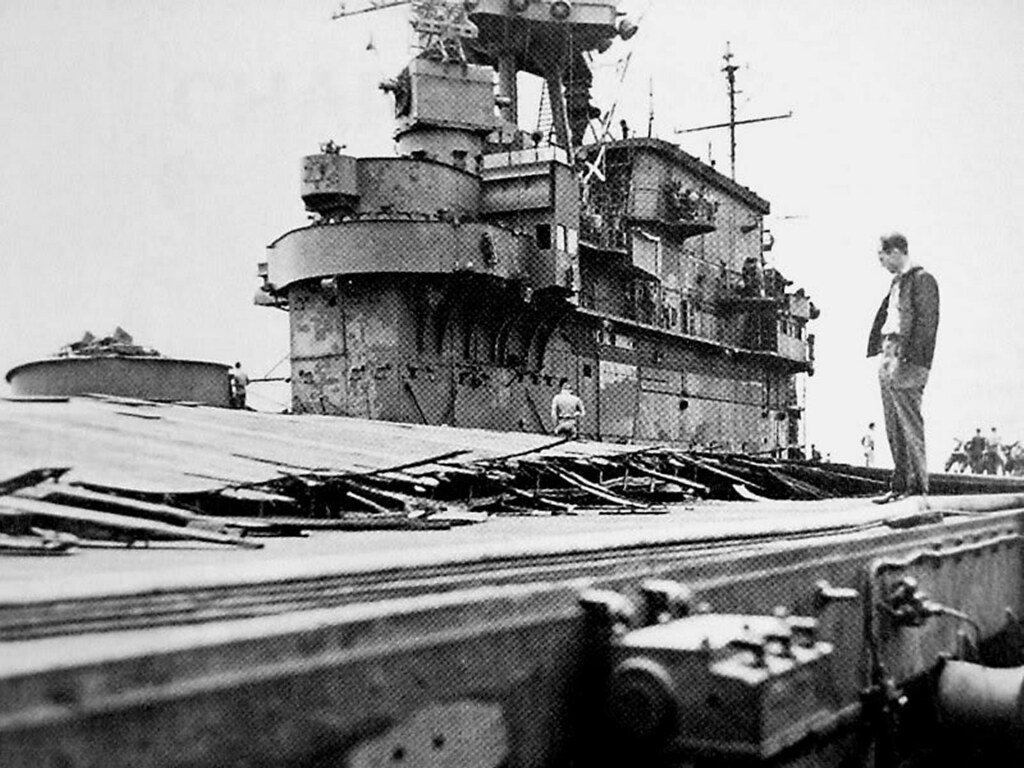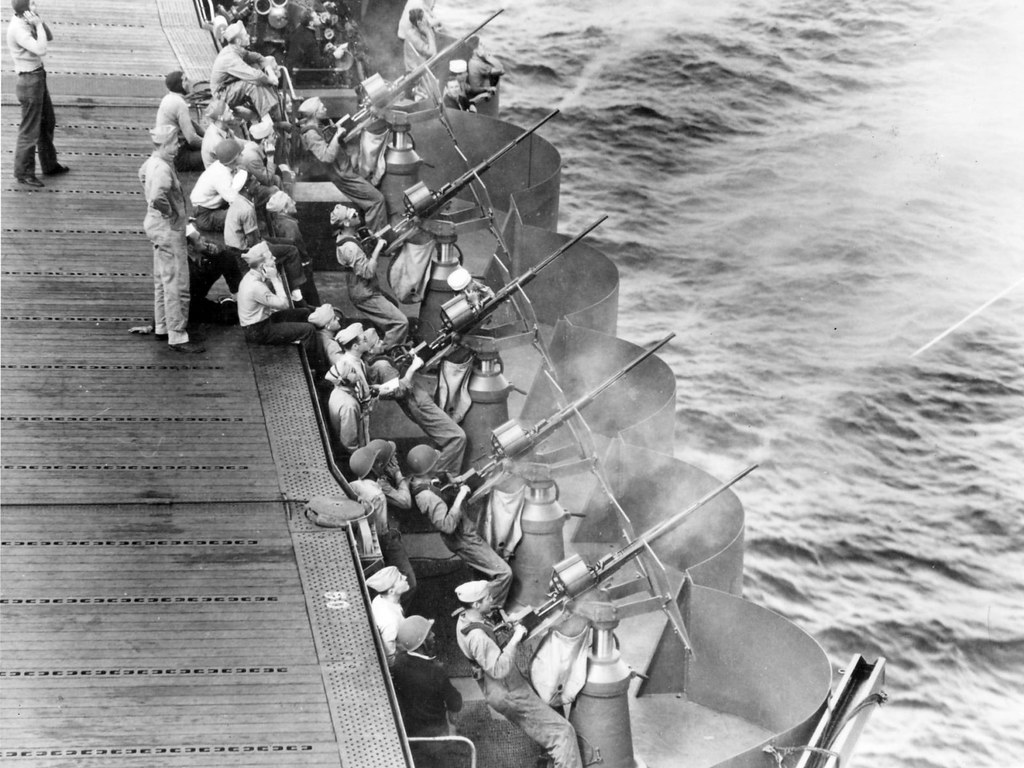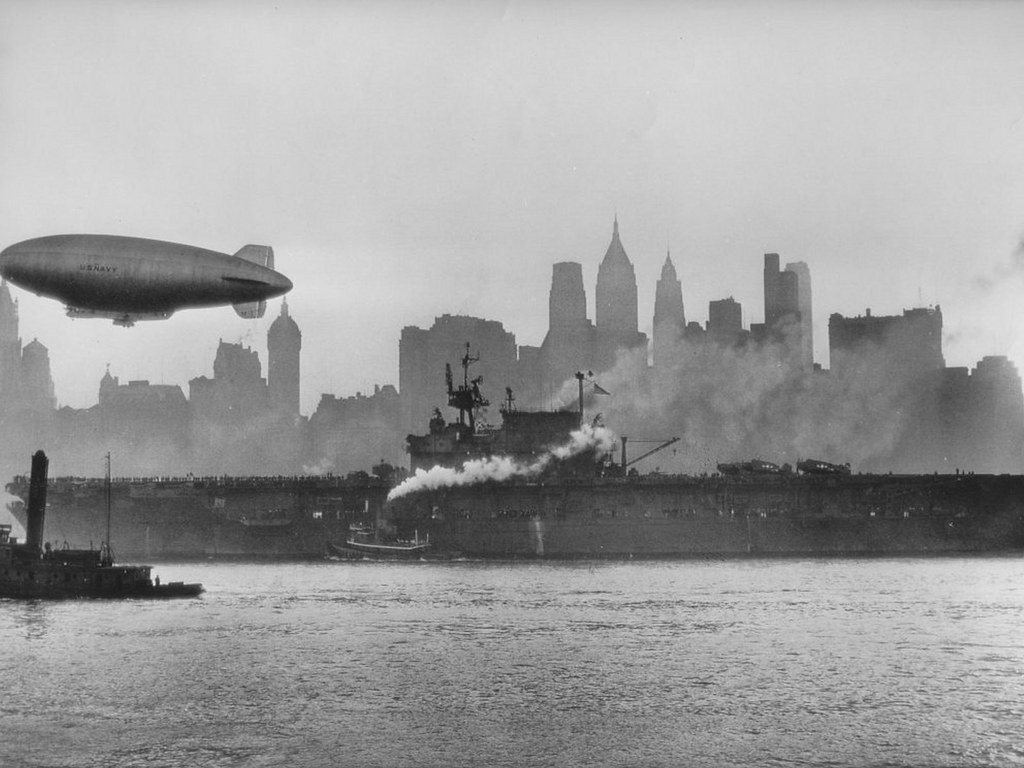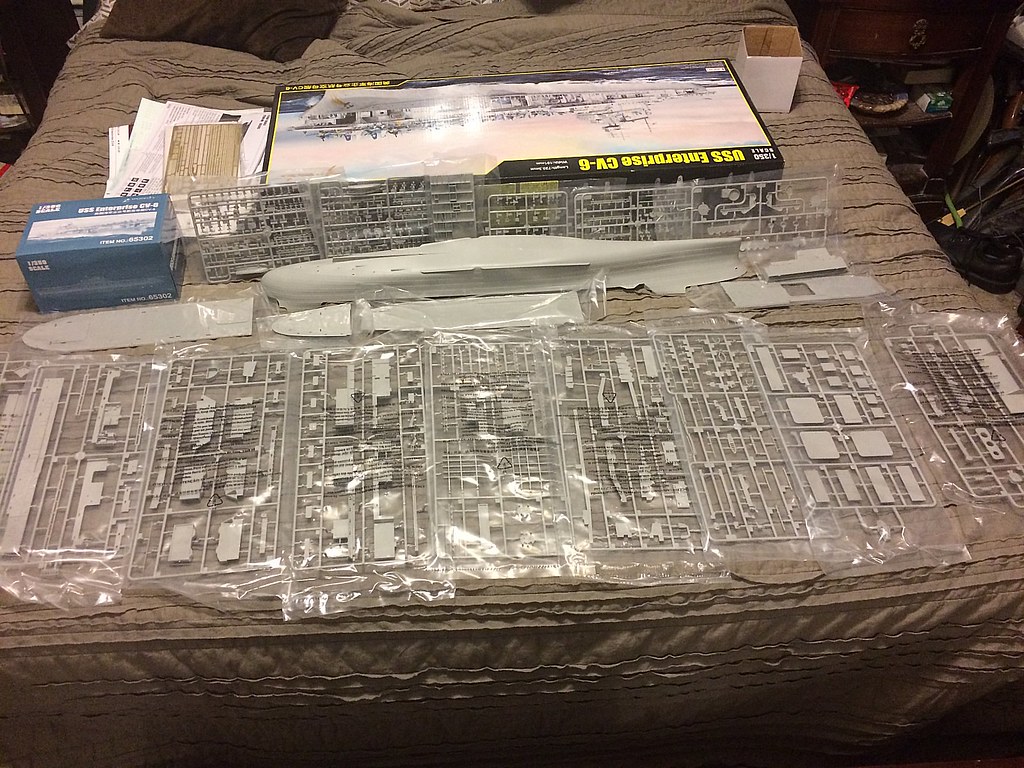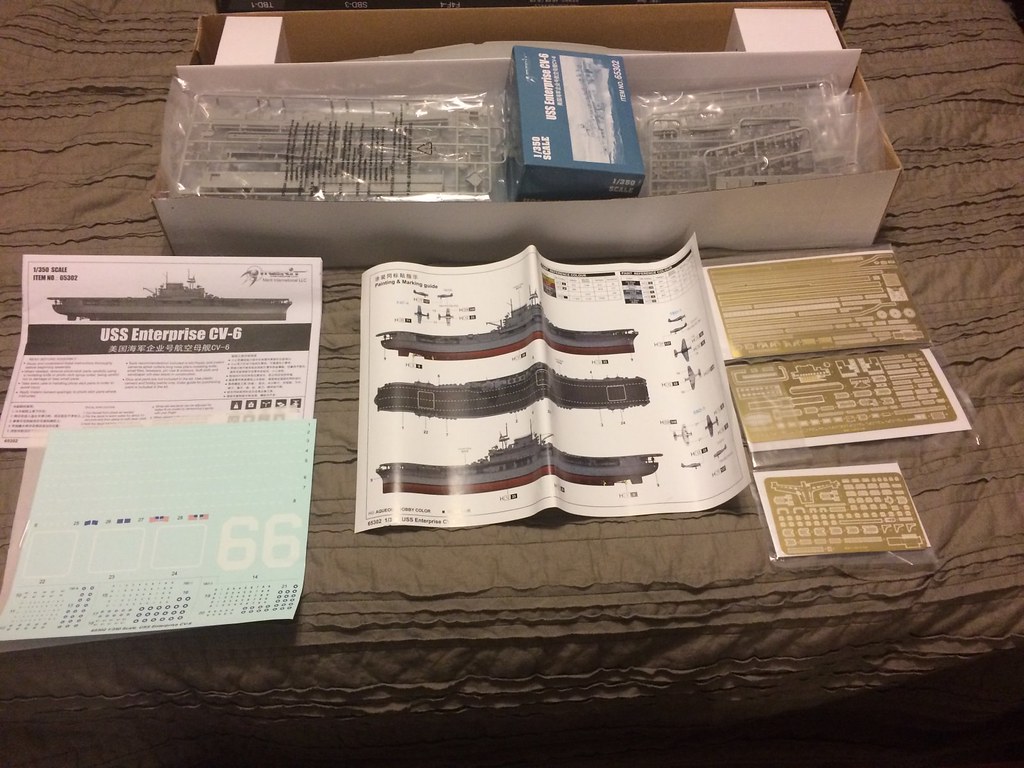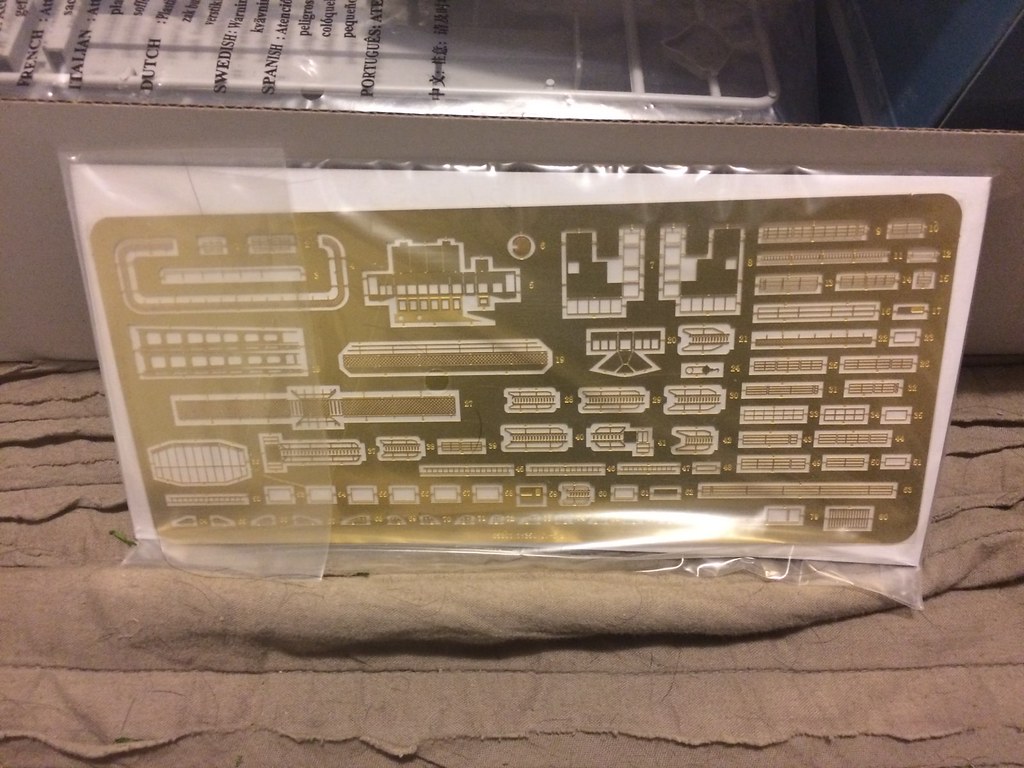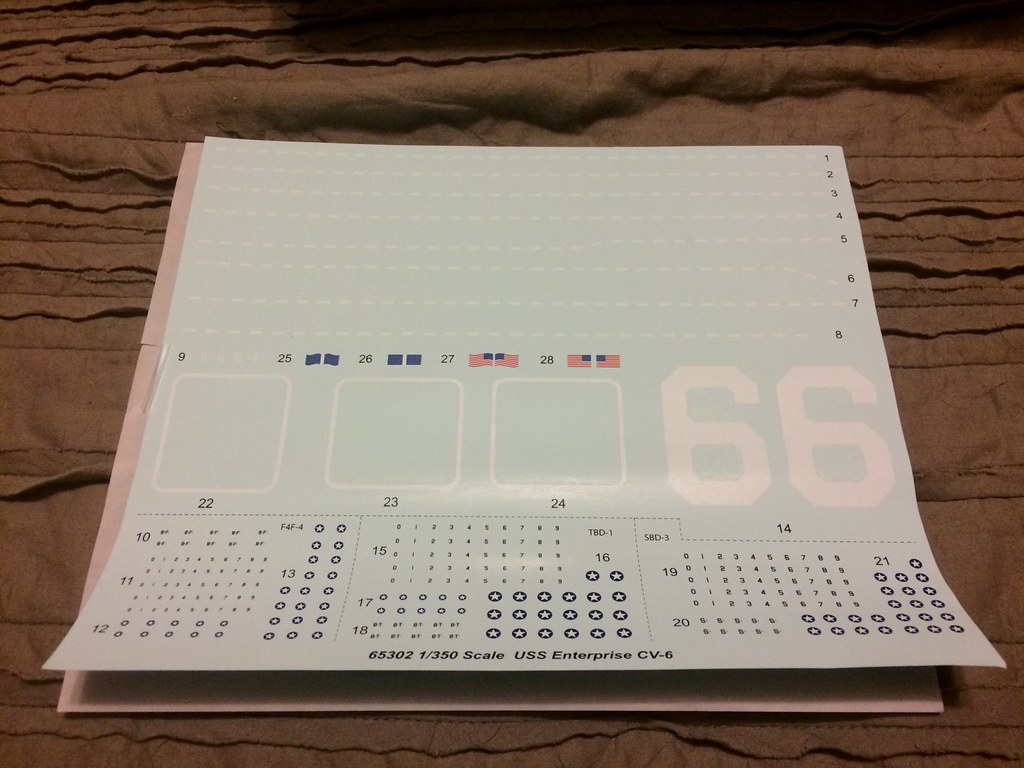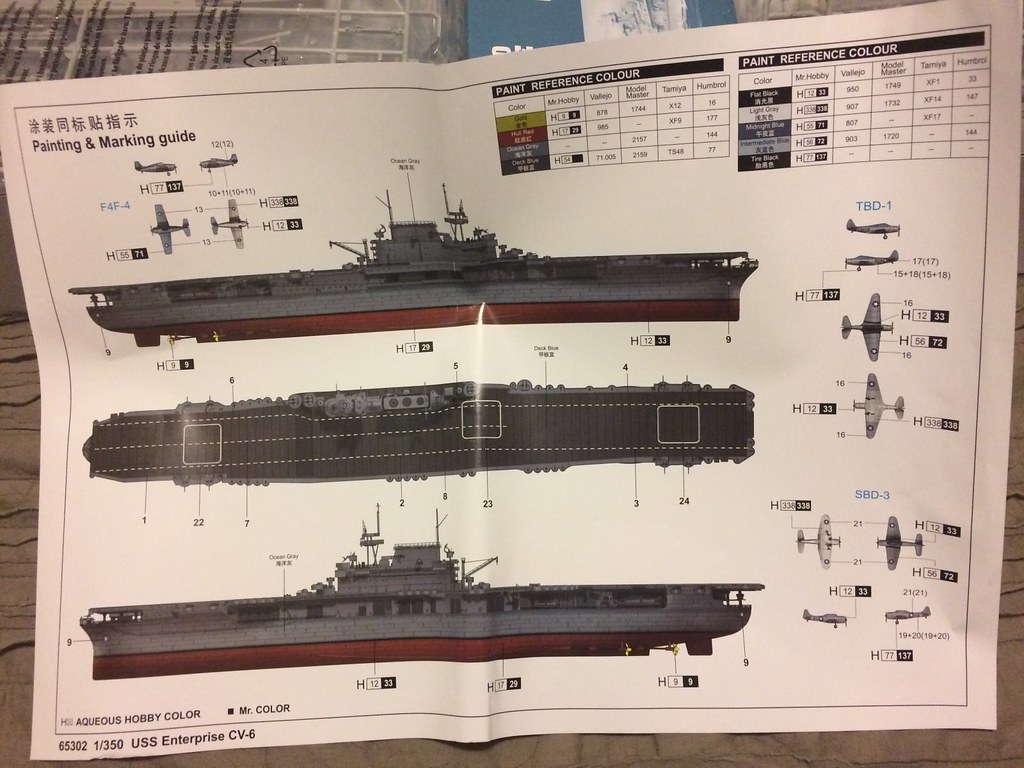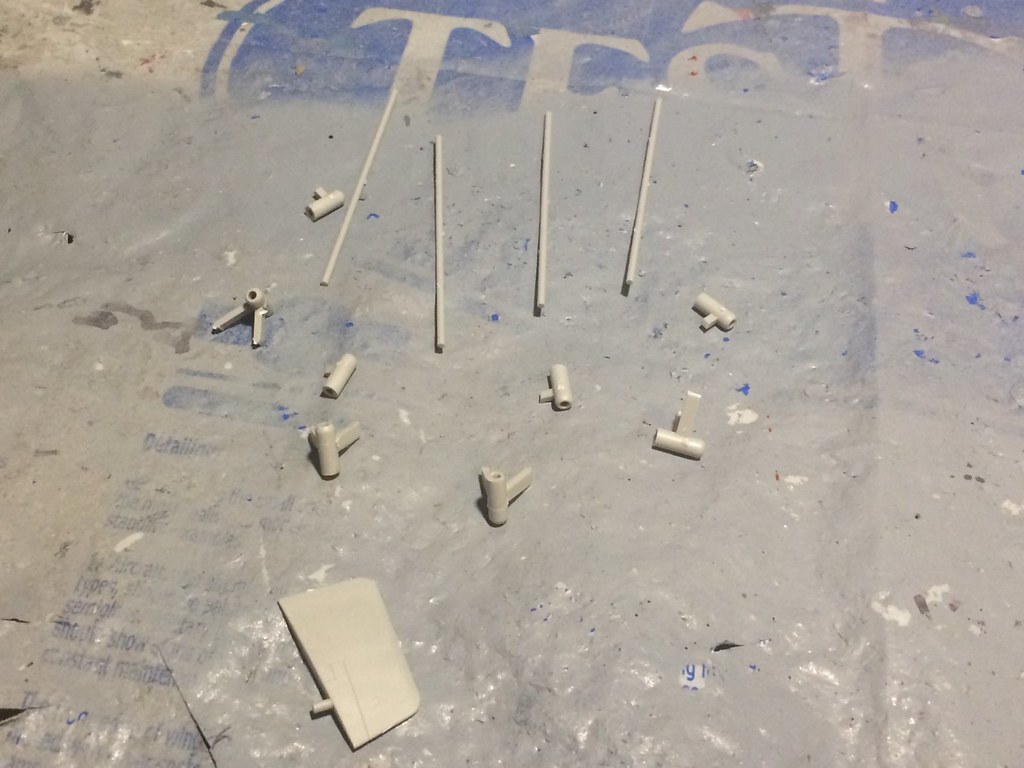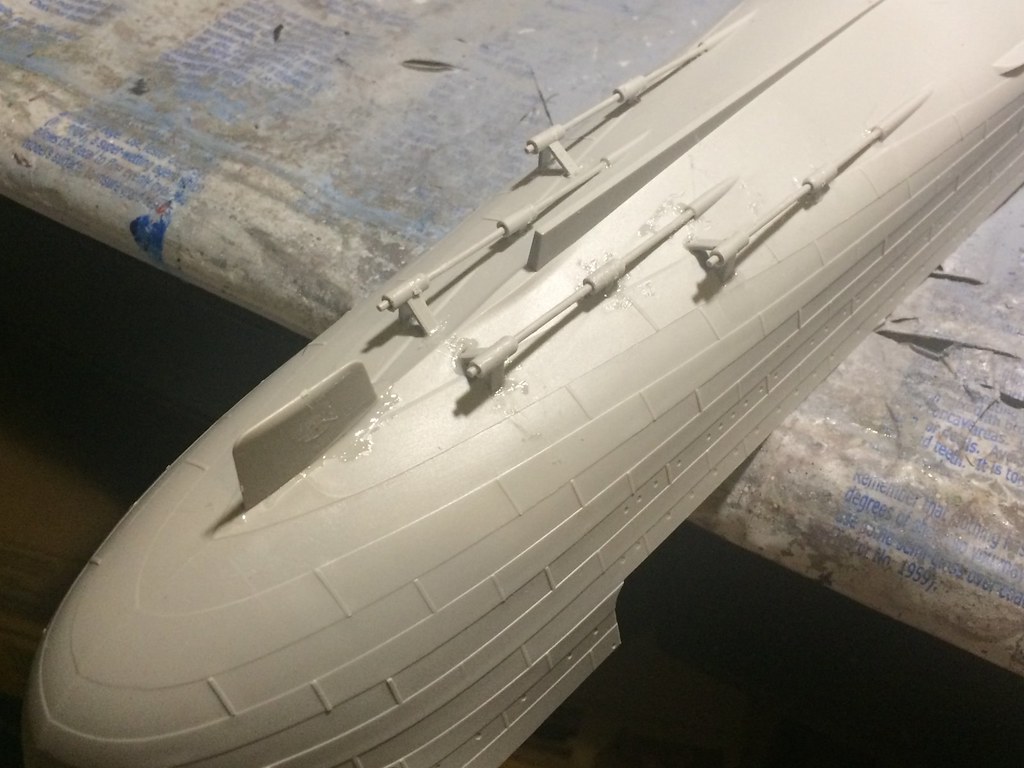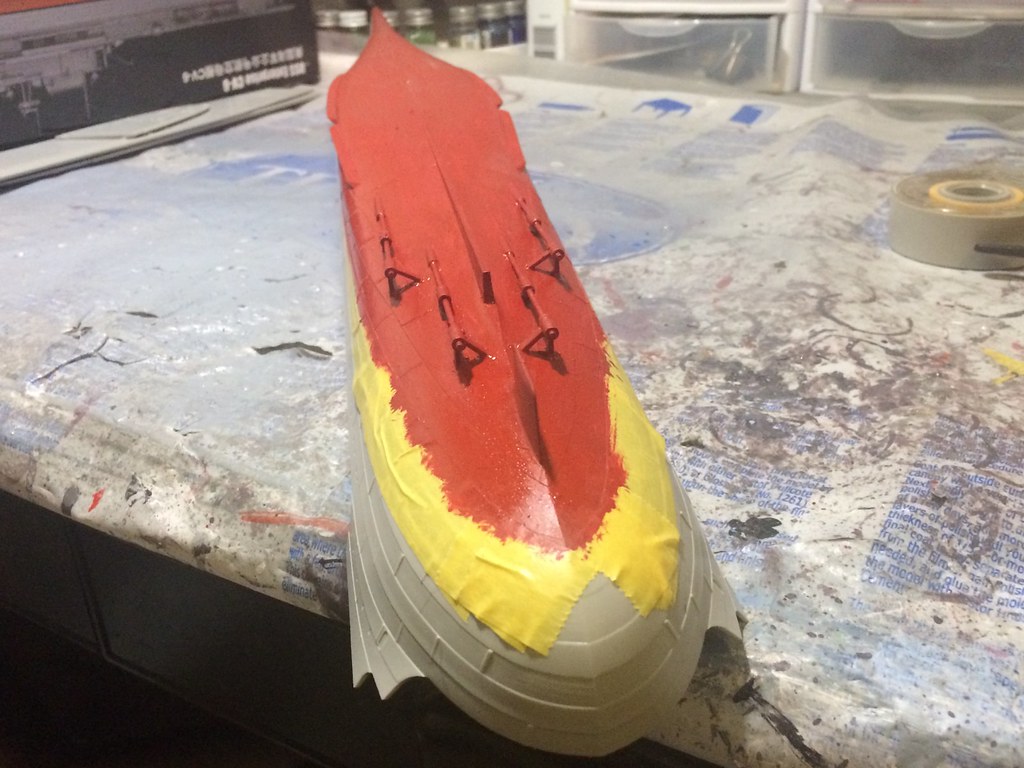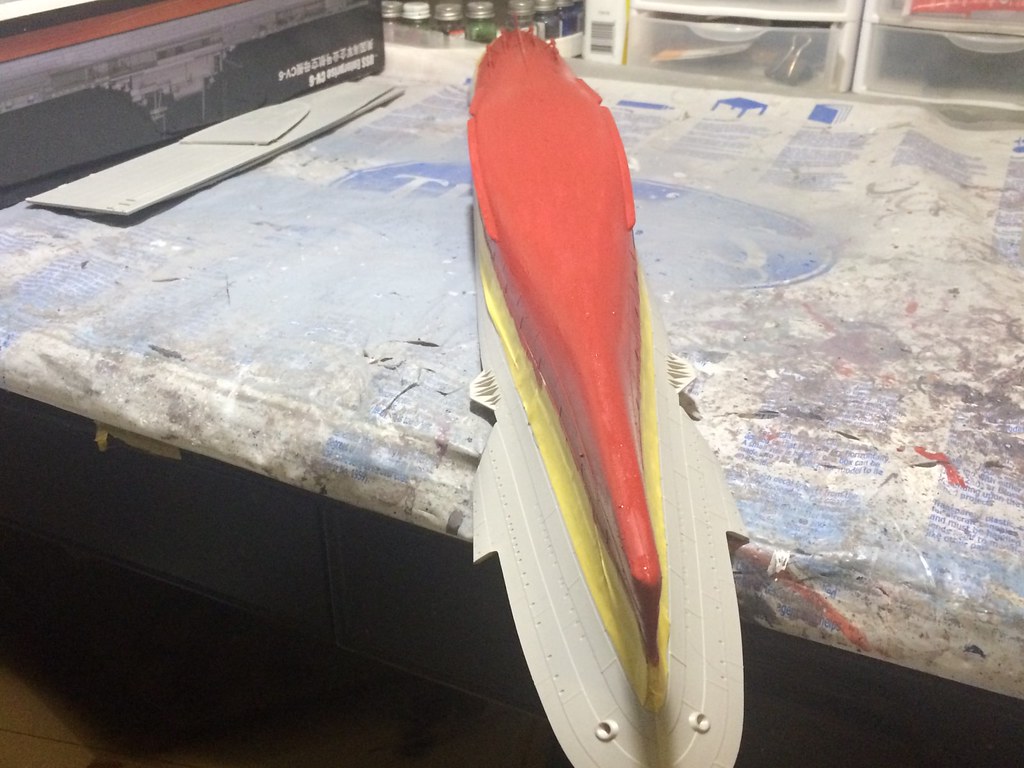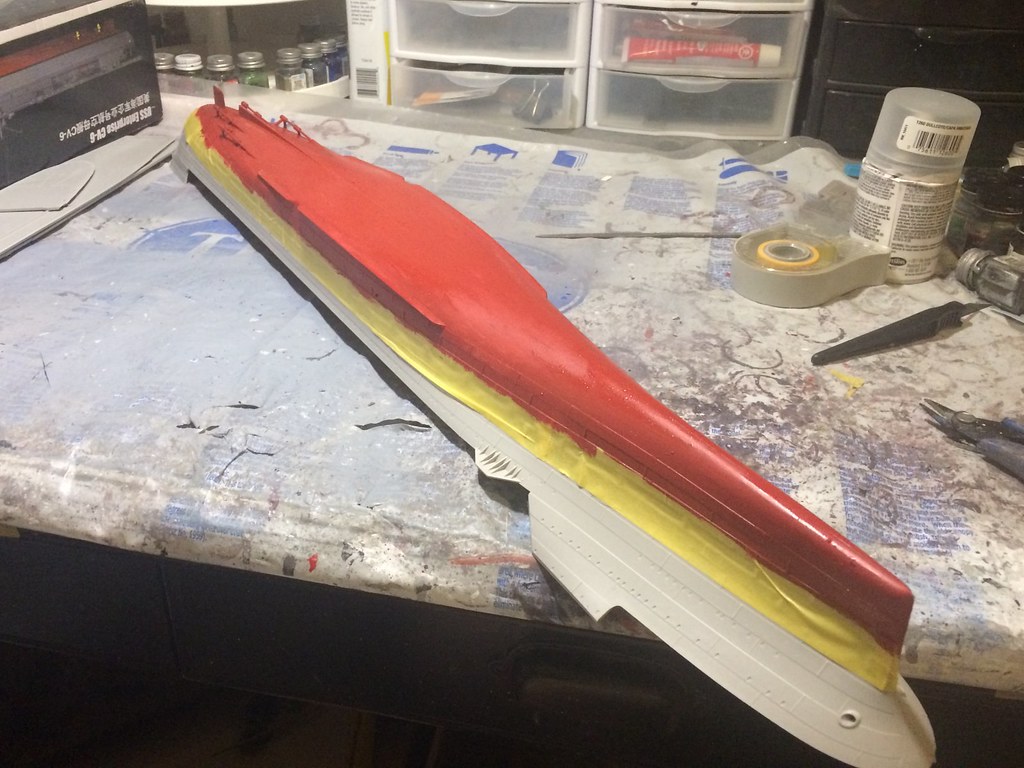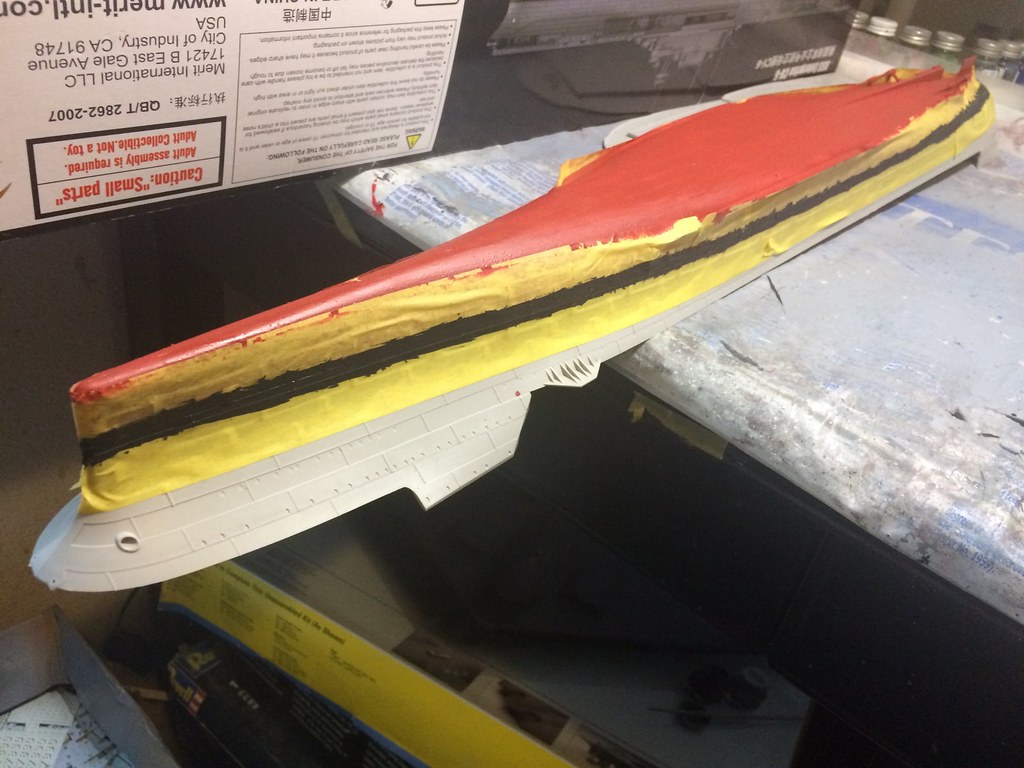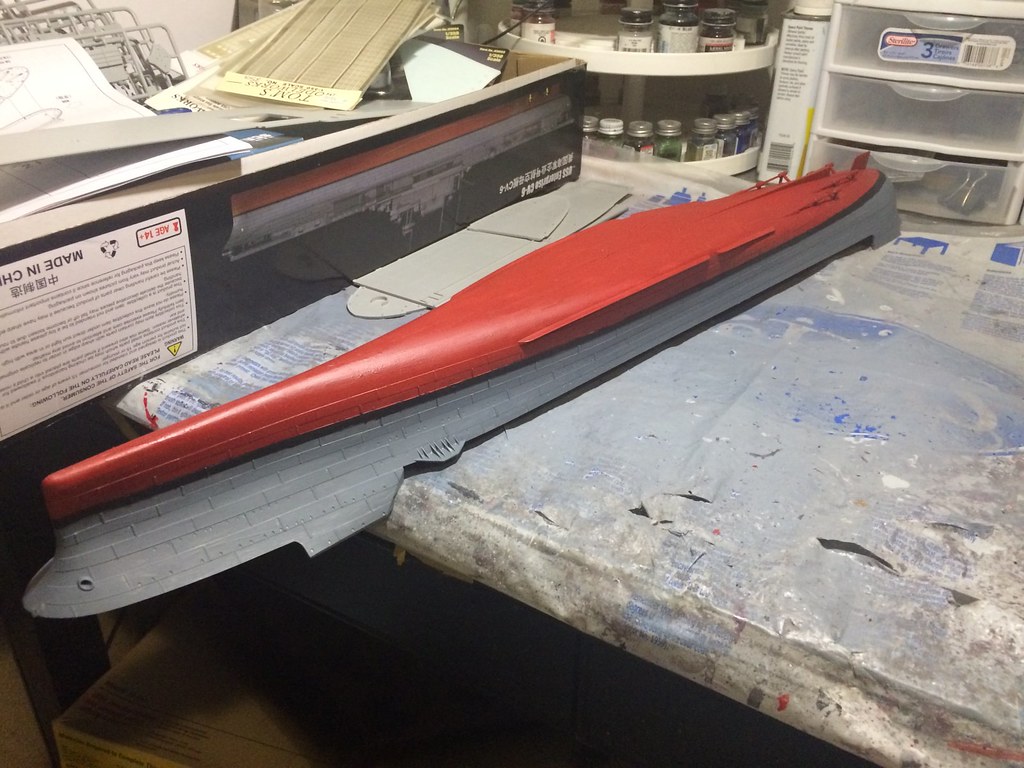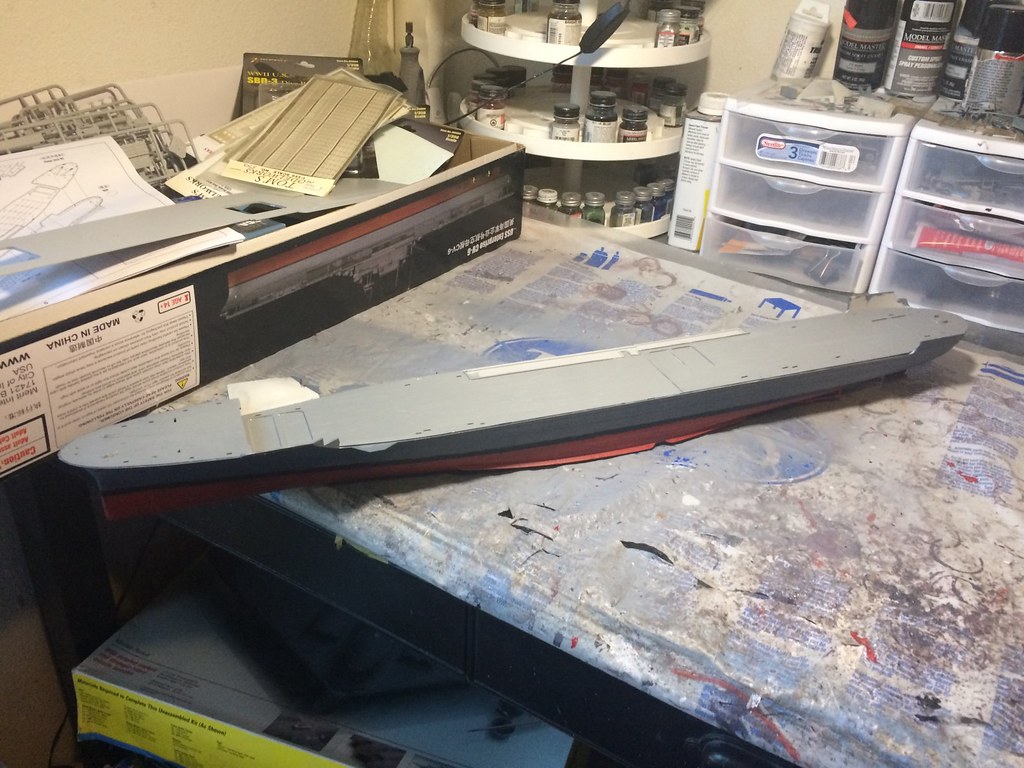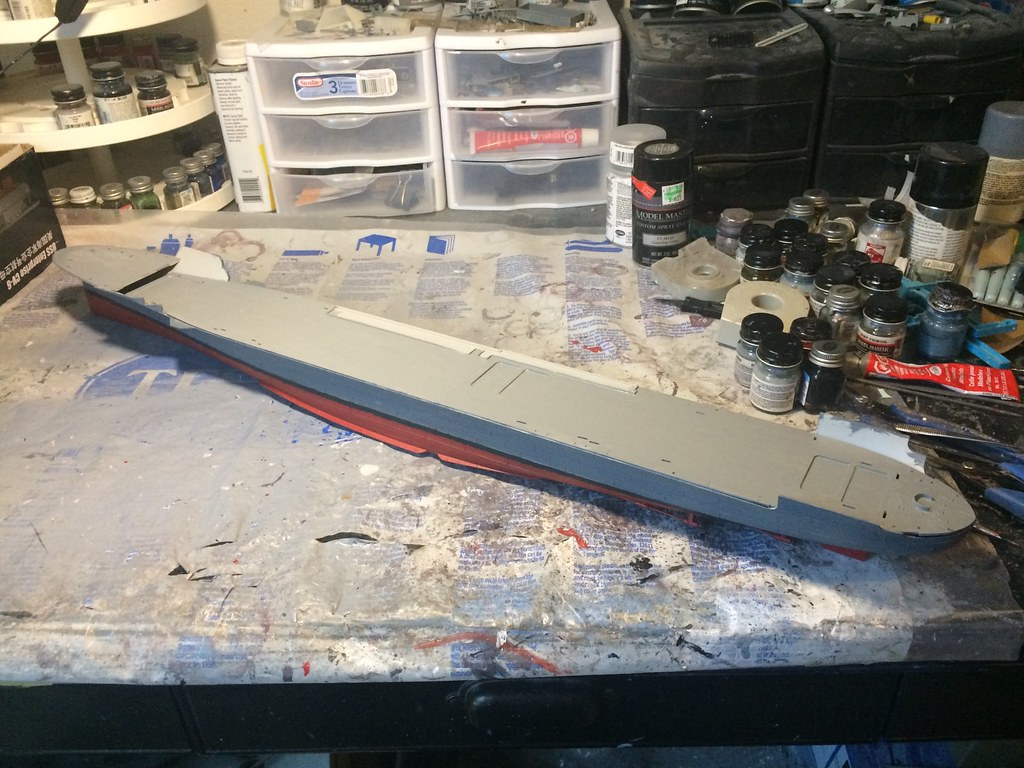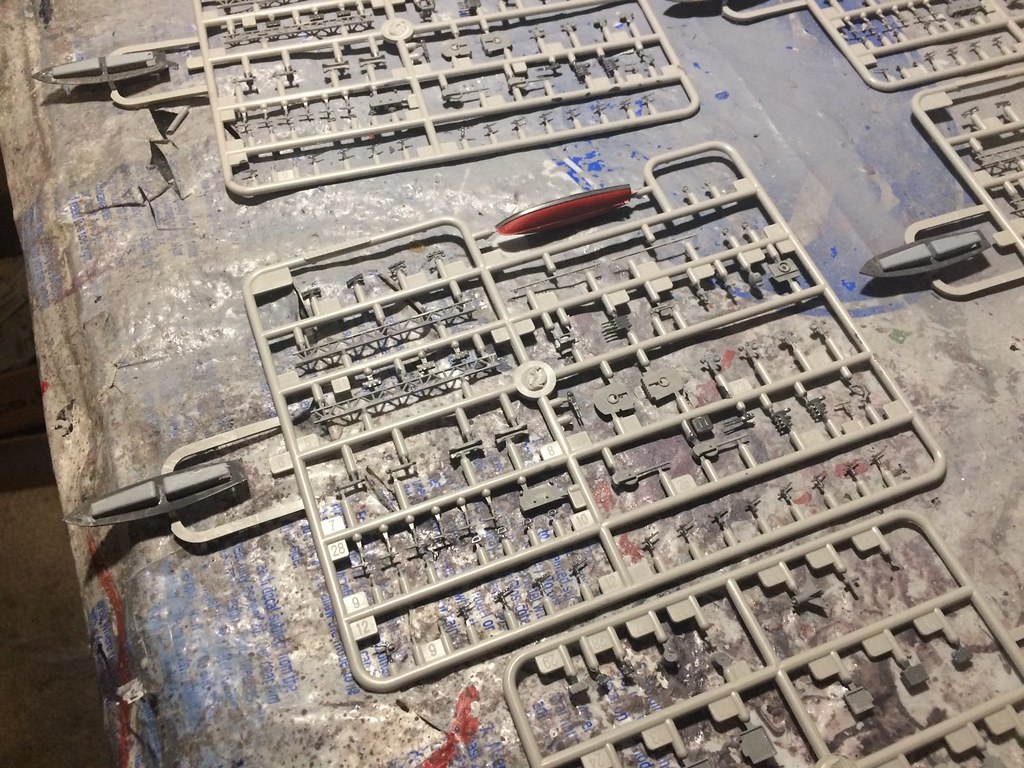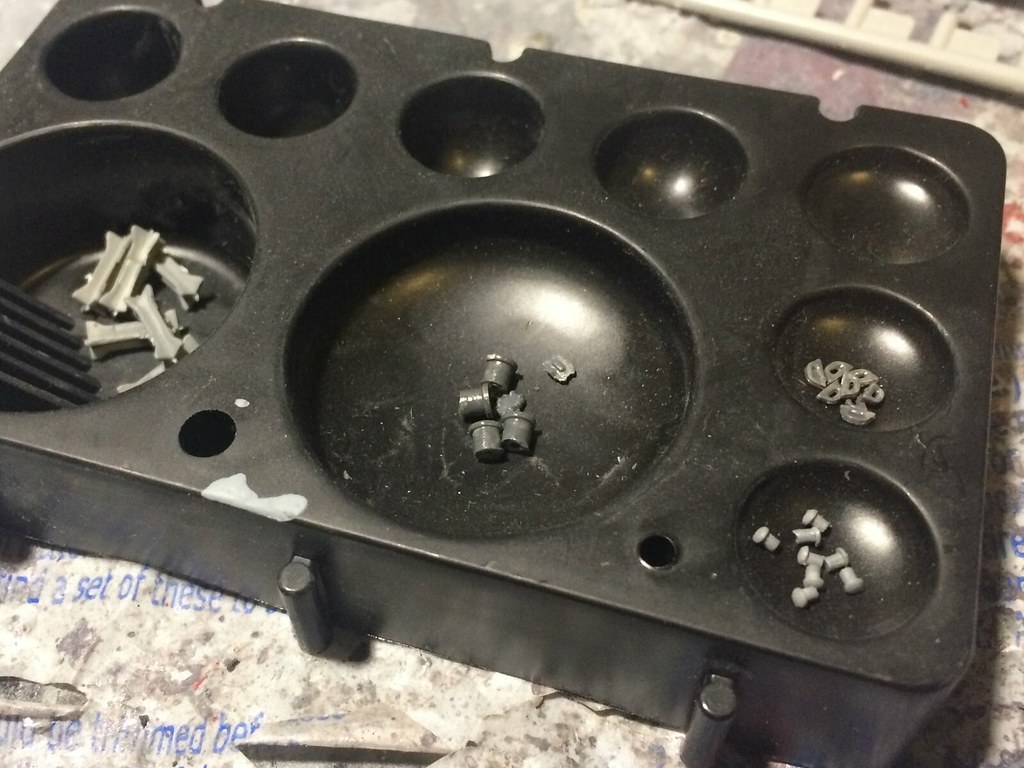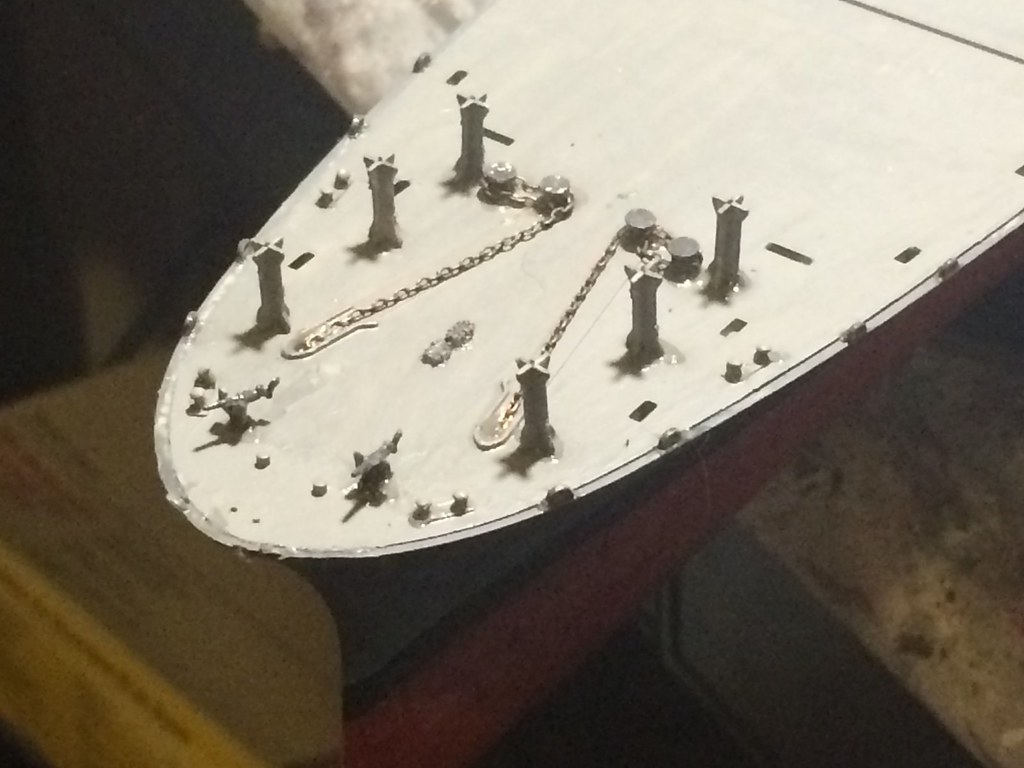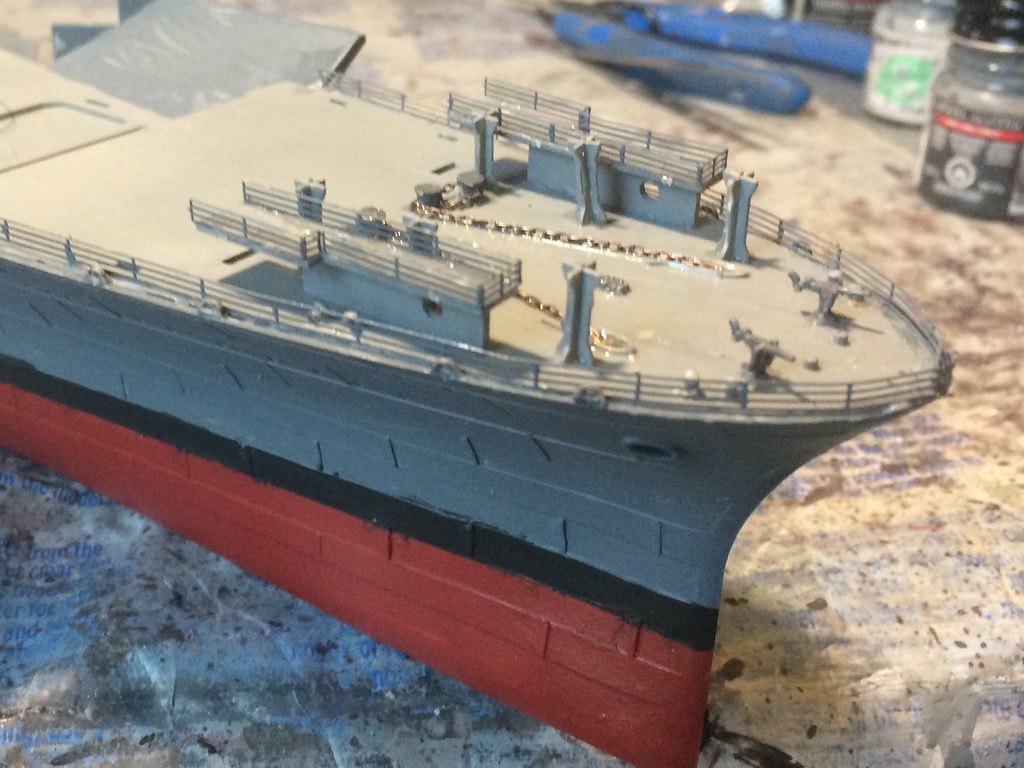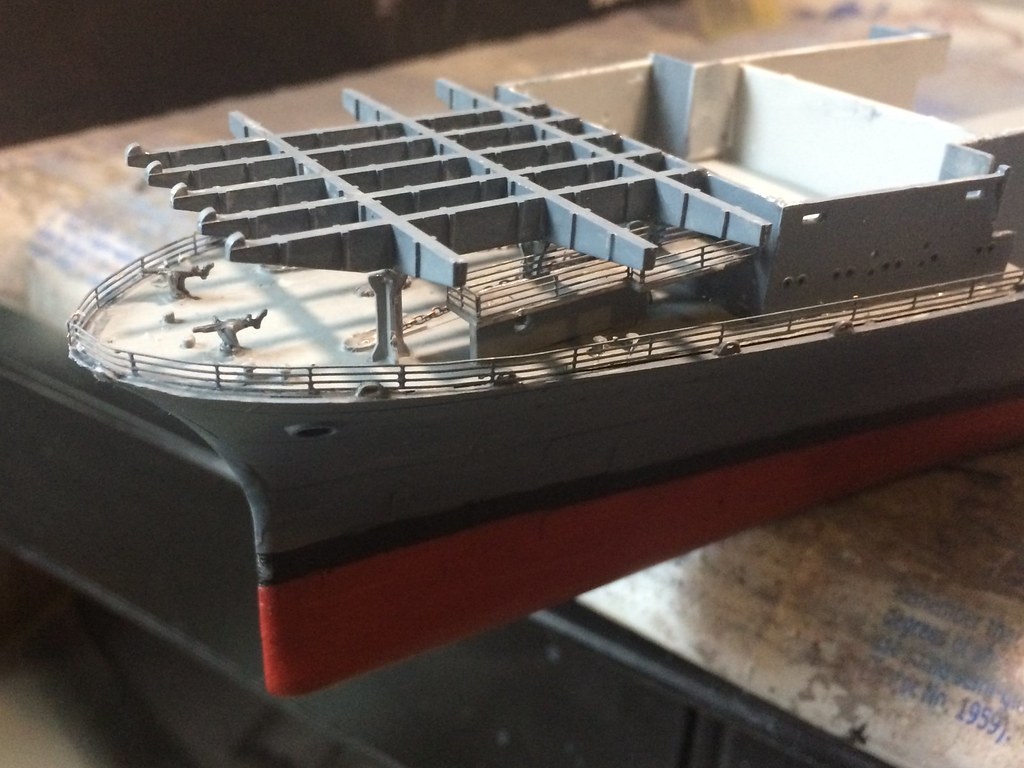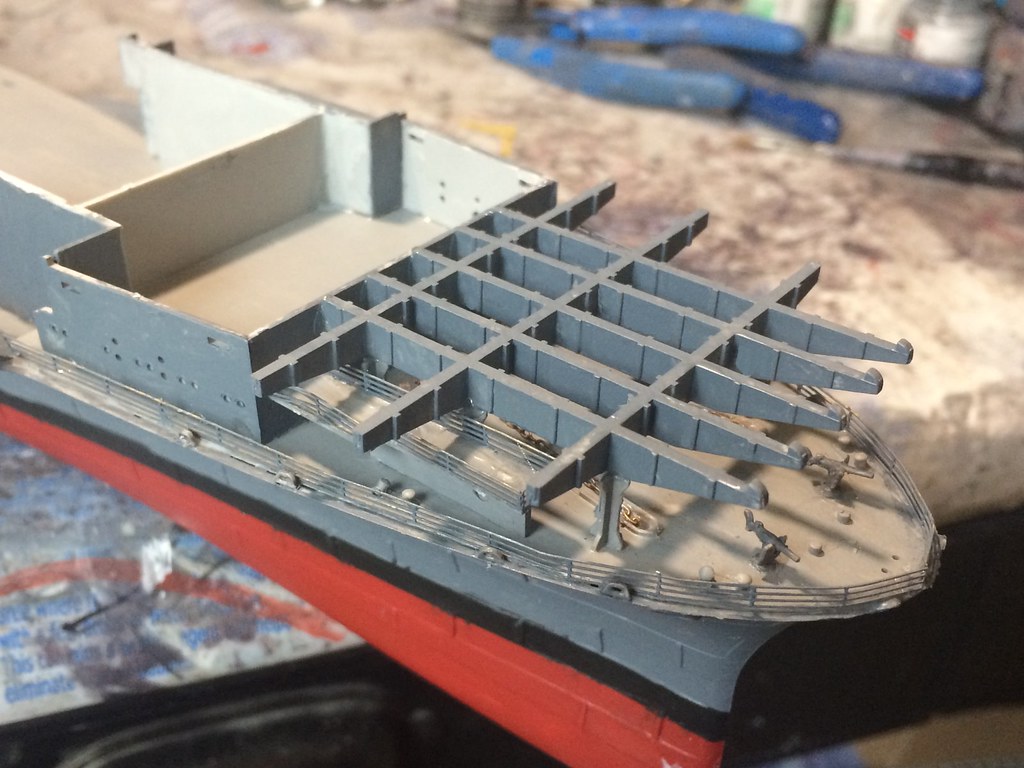My Review and Build of Merit Kit #65302, 1/350
Aircraft Carrier, USS Enterprise, CV-6 REVIEW & BUILD, Doolittle Raid Vessel
Note: You can see all the pictures in highest resolution at:
...or you can click on any of the pictures here and get a higher resoultion image.
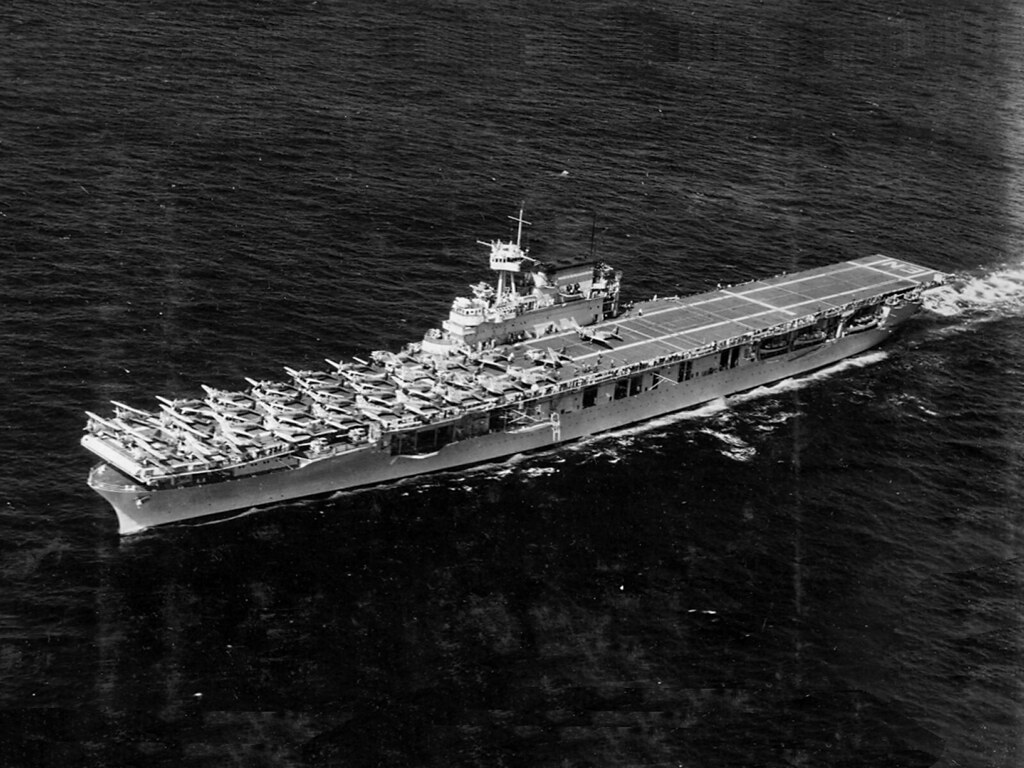
USS Enterprise, CV-6, Aircraft Carrier
The USS Enterprise aircraft carrier, CV-6, was the sixth official aircraft carrier that the United states Navy had acquired, and she was specifically built from the keel up as an aircraft carrier.
Earlier carriers leading up to the the Enterprsie were:
- CV-1 USS Langley, Covnerted from a Collier an commissioned an aicraft carrier in 1920
- CV-2, USS Lexington, Launched in 1925 and commissioned in 1927, at 43,000 tons, built from a battlecruiser hull up as a carrier. Sunk in 1942 at Coral Sea.
- CV-3, USS Saratoga, 2nd Lexingotn class, launched in 1926 and commissioned in 1927, built from a battlecruiser hull up as a carrier. Survived World War II.
- CV-4, USS Ranger, the first US carrier built from the keel up as a carrier. Launched in 1933 and commissioned in 1934, a little smaller at 25,5000 tons, but newer than the Lexington class, survived World War II.
- CV-5, USS Yorktown, Enterprise's sister ship, launched in 1936 and commissioned in 1937. 26,000 tons, sunk by Janese submarine following the Battle of Midway in 1942.
USS Enterprise, CV-6, was launched in 1936 and commissioned in 1938, and she also suvived the war. The last in the Yorktown classs wass USS Hornet, CV-8, which was launched in 1940 and commissioned in 1941 before the war started. She was lost in World War II as the Battle of the Santa Cruz Islands in 1942.
In between the Enterprise and the Hornet, a single carrier was also built separtely, the USS Wasp, CV-7. She was launched in 1939 and commissioned in 1941 abd was a smaller, displacing about 20,000 tons. she was also sunk in World War II, as she escroted reinforcements to Guadalcanala in Spetember 1942 by a Japanese submarine.
So, after Pearl Harbor, in Deember 1941, when the war started, the US NAvy havd eight aircraft carriers. Within a year of the start of th war, five of them had been sunk.
USS Enterprise was one of the three that was not, and she fought on valiantly throughout the war.
I am building her for two reasons.
First and foremost, as her history will show, she participated in more major battle action in World War II than any other United States ship. These actions included the Doolittle Raid on Tokyo, Battle of Midway, the Battle of the Eastern Solomons, the Battle of the Santa Cruz Islands, several engagements during the Guadalcanal Campaign, the Battle of the Philippine Sea, and the Battle of Leyte Gulf. During the war, Enterprise earned 20 battle stars, the most for any U.S. warship in World War II...or for that matter, in the entire history of the US Navy. She was the most decorated U.S. ship of all time.
During World War II, on three occasions during the Pacific War, the Japanese announced that she had been sunk in battle, only to have her return and fight them again.
The second reason is because of he participation in the Dooliitle raid in April of 1942, only six months after Pearl Harbor, when the Unites States launched a bold and audacious attack on Japan's capital city of Tokyo with B-25 Mitchell bombers flying off of USS Hornet, CV-8, which was being covered with fighters from USS Enterprise on the voyage to and from that Raid.
Early Years:
As stated, the USS Enterprise was commissioned in 1938, three years before the US entered World War II.
Enterprise sailed to Rio de Janeiro on her shakedown crusie after commissioning. After her return, she operated along the east coast and in the Caribbean until April 1939, and was one of fourteen ships to receive the early RCA CXAM-1 Radar. She was then ordered to duty in the Pacific.
Based first at San Diego (where she was used in the filming of Dive Bomber, starring Errol Flynn and Fred MacMurray) and then at Pearl Harbor after President Roosevelt ordered the Fleet to be "forward based," the carrier and her aircraft squadrons trained intensively and transported aircraft to various island bases of the Pacific. Enterprise left Pearl Harbor on 28 November 1941 one such mission, delivering Marine Fighter Squadron 211 (VMF-211) to Wake Island. She was returning from that mission on 7 December 1941, when the Japanese attacked Pearl Harbor
After Pearl Harbor:
As stated, on the morning of 7 December 1941, Enterprise was at sea and received a radio message from Pearl Harbor, reporting that the base was under attack. That evening, Enterprise, screened by six of her Grumman F4F Wildcat fighters, put into Pearl Harbor for fuel and supplies.
In fact, as they entered the area, her aircraft were fired on by anti-aircraft defenses, and one pilot radioed in, reporting that his aircraft was an American aircraft.
She sailed early the next morning to patrol against possible additional attacks in the Hawaiian Islands. Although the group encountered no surface ships, Enterprise aircraft did sink Japanese submarine I-70 at 23°45'N 155°35'W on 10 December 1941, getting one of the first at sea sinkings in of the war.
During the last two weeks of December 1941, Enterprise and her group steamed west of Hawaii to cover the islands while two other carrier groups made a belated attempt to relieve Wake Island. After a brief layover at Pearl Harbor, the Enterprise group sailed on 11 January 1942, protecting convoys reinforcing Samoa.
USS Enterprise wasted no time in trying to take the fight to the enemy.
On 16 January 1942, one of her TBD Devastators of Torpedo Squadron 6 (VT-6), piloted by Chief Harold F. Dixon, got lost on patrol, ran out of fuel, and ditched. Dixon and his two crewmates, bombardier Anthony J. Pastula and gunner Gene Aldrich, survived for 34 days in a small rubber raft that had no stored food or water, before drifting ashore on Pukapuka atoll. Dixon was awarded the Navy Cross for "extraordinary heroism, exceptional determination, resourcefulness, skilled seamanship, excellent judgment and highest quality of leadership." in leading the two men to safety.
On 1 February, 1942, Enterprise's Task Force 8 raided Kwajalein, Wotje, and Maloelap in the Marshall Islands, sinking three ships, damaging eight, and destroying numerous airplanes and ground facilities. Enterprise received only minor damage as the Japanese attempted to counterattack while her group retired to Pearl Harbor. It was the first of many times the Japnese attempted to catch and sink the USS Enterprise.
The next month, the Enterprise group swept the central Pacific, attacking enemy installations on Wake and Marcus Islands.
Doolitle Raid:
After minor alterations and repairs at Pearl Harbor, Enterprise departed on 8 April 1942 to rendezvous with her sister ship, the USS Hornet.
The mission was top secret and the two carriers and their escorts (each had four destroyers and two heavy cruisers along with them), met in the Pacific. Hornet had sailed from the west coast.

The men were elated to hear that this mission was to take the fight to the enemy hme islands and her capital. The two carrier group sailed west, Enterprise escorting Hornet on the mission to launch 16 Army B-25 Mitchells in the "Doolittle Raid" on Tokyo.
Japanese picket shis were well out from the Japanese Islands and one of these say the group and radioed their sighting before being sunk by the surface ships.
Immediately enterprise launched aircraft to protect Hornet who began launching her bombers two hunred miles early. But they did launch, which meant eacn and every one of the bombers would not have the fuel to reach their planned landing field in China and they would have to either dith over the sea, or crash land in China in Japanese controlled areas. They chose to make the attack and they did so,
While fighters from Enterprise flew combat air patrol, the B-25s launched on 18 April, and flew undetected to the target. The task force, its presence known to the enemy after the sighting then reversed course and returned to Pearl Harbor on 25 April 1942.
Five days later, Enterprise sortied toward the South Pacific to reinforce U.S. carriers operating in the Coral Sea. However, the Battle of the Coral Sea was over before Enterprise arrived. After executing, with Hornet, a feint towards Nauru and Banaba (Ocean) islands which caused the Japanese to delay their Operation to seize the two islands, Enterprise returned to Pearl Harbor on 26 May, and began intensive preparation to meet the expected Japanese thrust at Midway Island.
@bd popeye @Air Force Brat @Jura @FORBIN @Obi Wan Russell @Equation @SouthernSky @TerraN_EmpirE @kwaigonegin @SamuraiBlue @Blackstone @Deino @antiterror13


